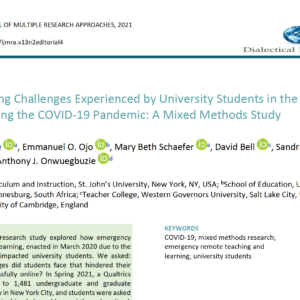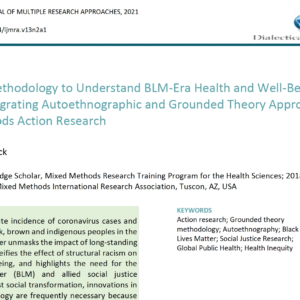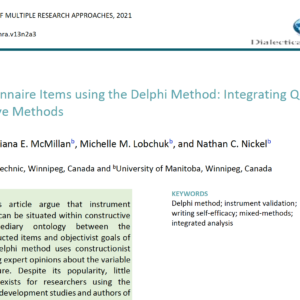13(1). 08. Black Lives Matter: Examining an Urban High School STEAM Academy Supporting African American Students, Families, and Communities using a Healing-Centered Approach
$0.00
Description
Authors
Edward C. Fletcher Jr.(a) and Tony Xing Tan(b)
(a) The Ohio State University, Columbus, OH, USA; (b) University of South Florida, Tampa, FL, USA
Abstract
In this study, we used an exploratory sequential mixed methods research design to examine how an urban high school STEAM (Science, Technology, Engineering, Arts, and Mathematics) themed academy—with a 98% African American/Black and 100% economically disadvantaged student population—provided wraparound services to demonstrate care for students, families, and the community. We also studied how their school efforts promoted student engagement. In Phase 1, we collected qualitative data to examine the wraparound supports and philosophies that the school stakeholders (N = 39) used to promote a sense of caring as well as community. In Phase 2, we analyzed quantitative survey data from the African American/Black academy students (N = 177) on their levels of engagement (behavioral, cognitive, and emotional) in the school and compared them to African American/Black students at a comprehensive high school (N = 179). Based on a combination of perspectives of school personnel, school stakeholders, and results from the high school survey of student engagement, we found that the wraparound services provided equitable supports for economically disadvantaged students, was instituted using a healing-centered mindset, and enabled the school personnel and stakeholders to adopt a no excuse disposition. Even further, we found that in comparison to students at the large comprehensive high school, the academy students had statistically and practically significantly higher scores on behavioral engagement (p < .001; d = .58), and statistically significantly higher scores on cognitive engagement (p < .01; d = .31). There was no statistically significant difference in emotional engagement (p = .98). Our findings highlight best practices for ensuring equity for African American/Black high schools in the wake of both the Black Lives Matter movement and the COVID-19 pandemic.




